Also see: Our photography tours in the Himalayas
The name of ‘Himalayas’ brings into mind a picture of lofty snow peaks and dramatic landscapes. Most travellers as well as photography-enthusiasts, at least the first timers, go to the Himalayas with an aim to see & capture the high mountains. While there are a few places that match the grandeur of nature’s creations in the Himalayas, there is another aspect of the region that’s equally charming – it’s people and the culture.
Regular travellers always speak of the kindness, the helping nature and the able hands of the strong local people who are always available to help. The keen, observing and curious travellers and photographers also have stories and images of the unique indigenous cultures, the Buddhist traditions and life in the remote places. Here is a look at all things Himalayas beyond landscapes.
The Monastic Structures
Nearly all the villages in high mountains of trans-Himalayas have a monastery located somewhere nearby. Often, they are located just outside the village on a crag overlooking the valley, in locations that we can easily call ‘out of the world’. From the right vantage point, the monasteries appear like a small speck in against the mountains creating an interesting relief in the landscapes.
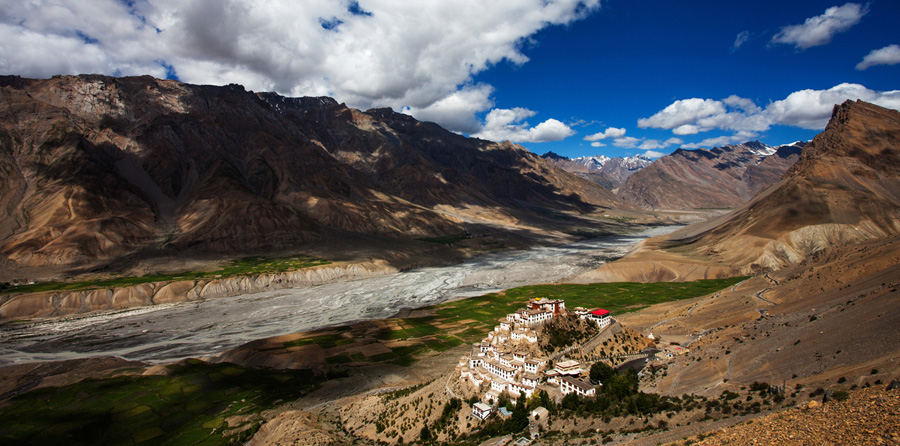
Ki Monastery in Lahaul & Spiti Himalayas

Stakna monastery in snow during a winter in Ladakh.
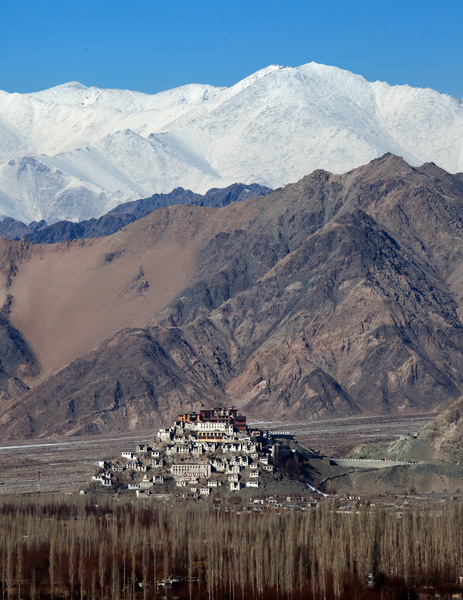
Thiksey Monastery in Ladakh

The well-known Tiger’s Nest Monastery in Bhutan.
The Monks
When you are in the high Himalayas, you will see genial monks in flashy maroon robes everywhere. It doesn’t always have to be in a monastery, although you find them in good numbers within the premises of one. Whether you are shopping in the local market, travelling in a bus or just taking a walk in a residential neighbourhood, it is normal to bump into a smiling monk every once in a while. They are always cheerful–something that rubs off easily into you when you are in their company.
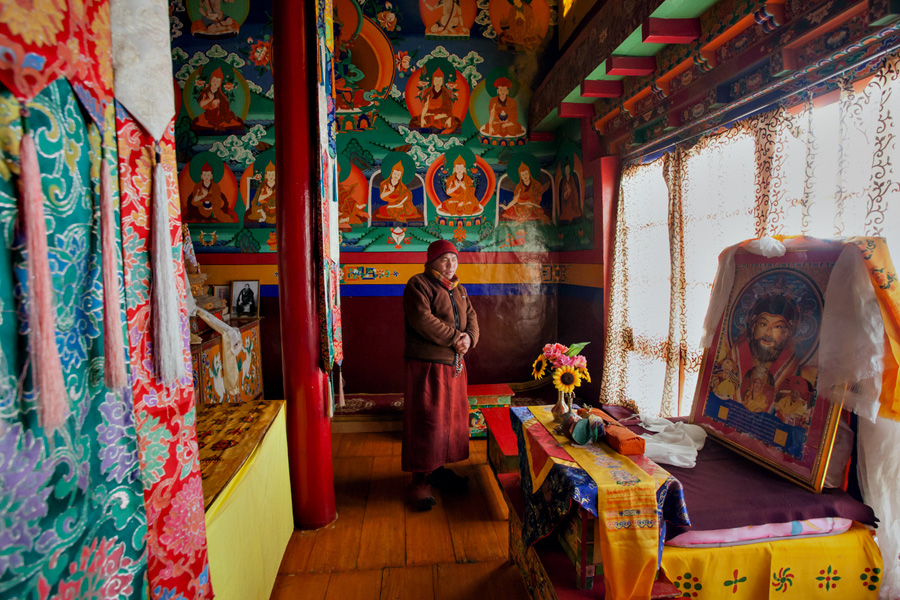
A monk in Stakna Monastery, Ladakh.

A monk in Paro, Bhutan.
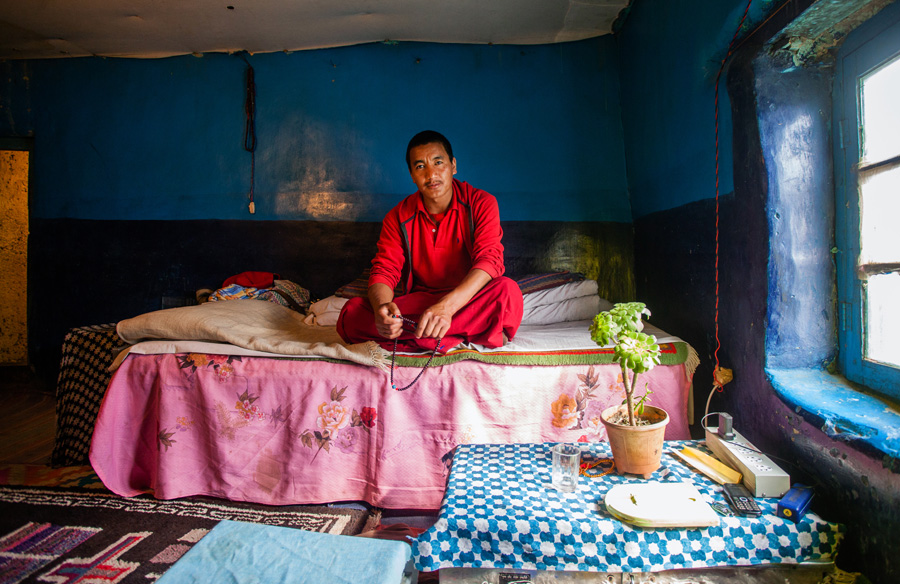
A monk from Lahaul & Spiti
The Children
I am often amazed at the kind of energy that the children have in these places. This becomes especially relevant when we see our own bodies struggling in the thin air, unable to stay fully active in this rarefied air. The kids here are hyperactive, always ready to play and chase each other, never getting tired.
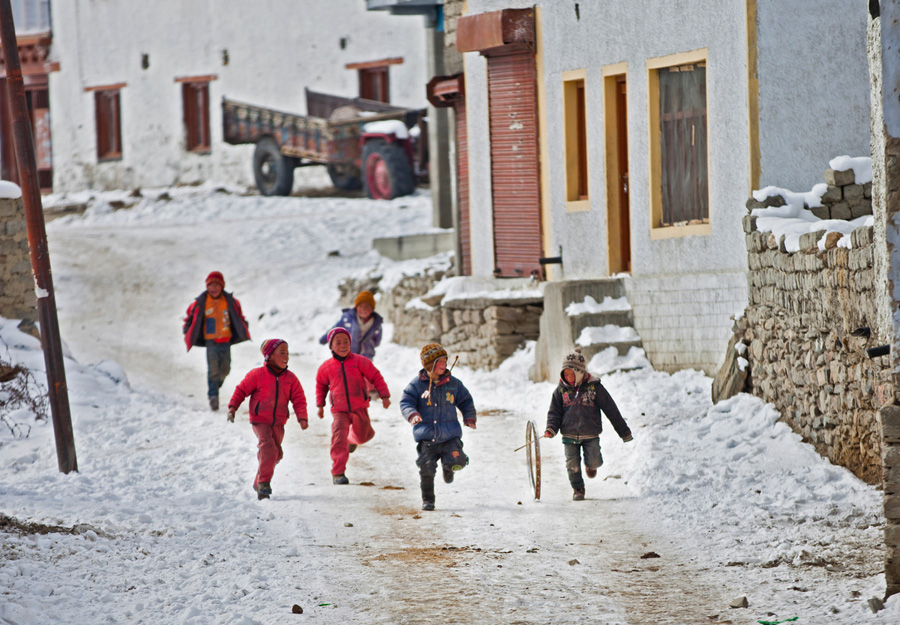
Children play on a snow filled road during winter in Ladakh.

Young monks playing in Lahaul & Spiti
Yak, Sheep and Shepherds
There are two major occupations for the people in the Himalayas – agriculture and animal keeping. Now thanks to a large number of us flocking the region, tourism adds up as the third one. Animals have always been very important for the people of the Himalayas. Move away from the towns to the rural areas, and you will see plenty of sheep grazing peacefully in the meadows. Go higher up and you will also see yaks grazing in the far corners of the mountains.
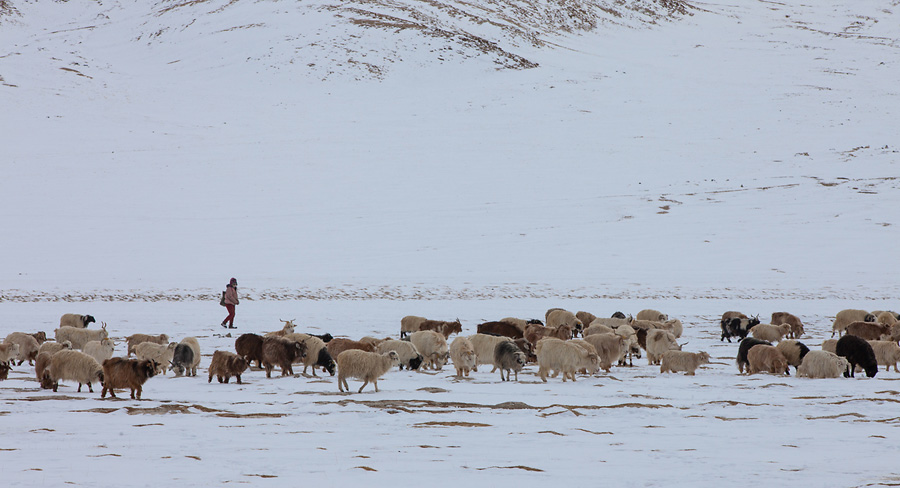
Sheep herding during winter in Ladakh
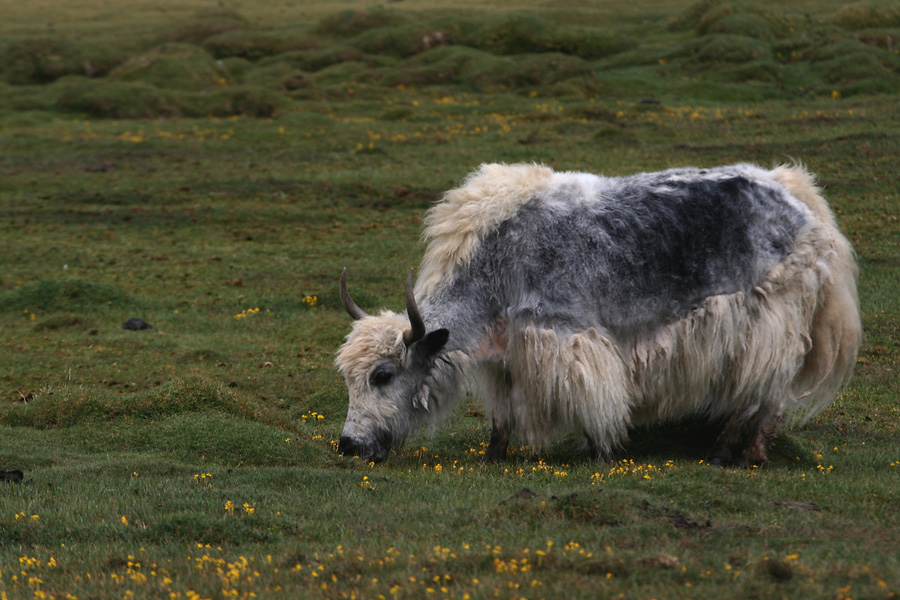
A yak grazing in a meadow in Ladakh.

A shepherd herding his sheep in Ladakh.
Festivals
Most Buddhist communities in the Himalayas celebrate ‘Losar’, the Tibetan Buddhist New Year’s Day. Besides this, every monastery will hold its own annual festival. Both during Losar and monastic festivals, monks wear demonic masks and perform dancing rituals for a gathering of the full village. They swirl and go round to a music of drums and cymbals wearing colourful attire and scary-looking masks.

Monks dance at a festival in Ki Monastery, Lahaul & Spiti
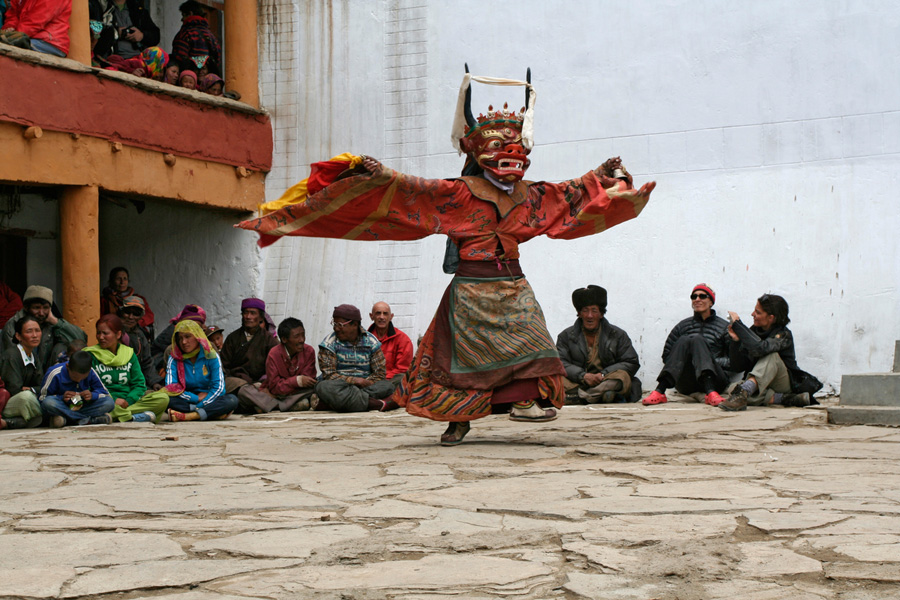
A monk performing masked dances during a festival in Ladakh.

A monk performs to a full crowd in Thimphu, Bhutan

Monks playing cymbals at a festival in Ladakh.
The people
Most people living in the high Himalayas are of mongoloid origin and follow Tibetan Buddhism. Their facial features are unique, with their slightly sunken eyes, prominent cheek bones, broad face. They are generally hardworking, once an essential for surviving the mountains. Yet, they are genial, approachable and always helpful even to strangers.

A lady from the remote regions of Ladakh.

A lady from Paro, Bhutan.
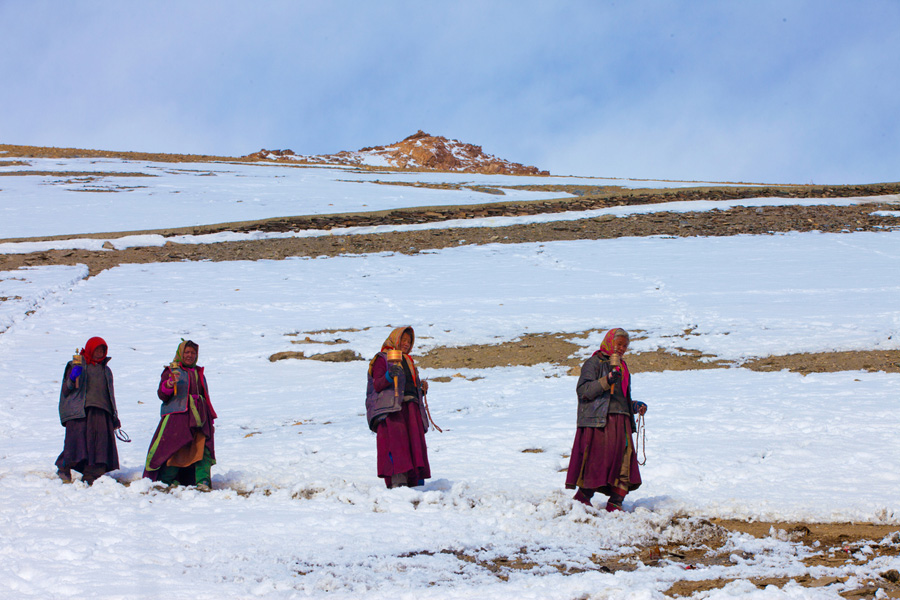
Women with prayer wheels walking on snow during winter in Ladakh
Chai Shops
These are probably a newer feature compared to all other things we listed above. The tea-shops in the Himalayas are perhaps the simplest structures that you can see. Often they are mud or stone walls covered by tarp or sheet. In some places, they are parachute tents – parachutes held up with a pole in the center. Insides are sparsely furnished small and intimate spaces. A good number of those places simply serve maggi and tea through the day and little else, except during lunch time.
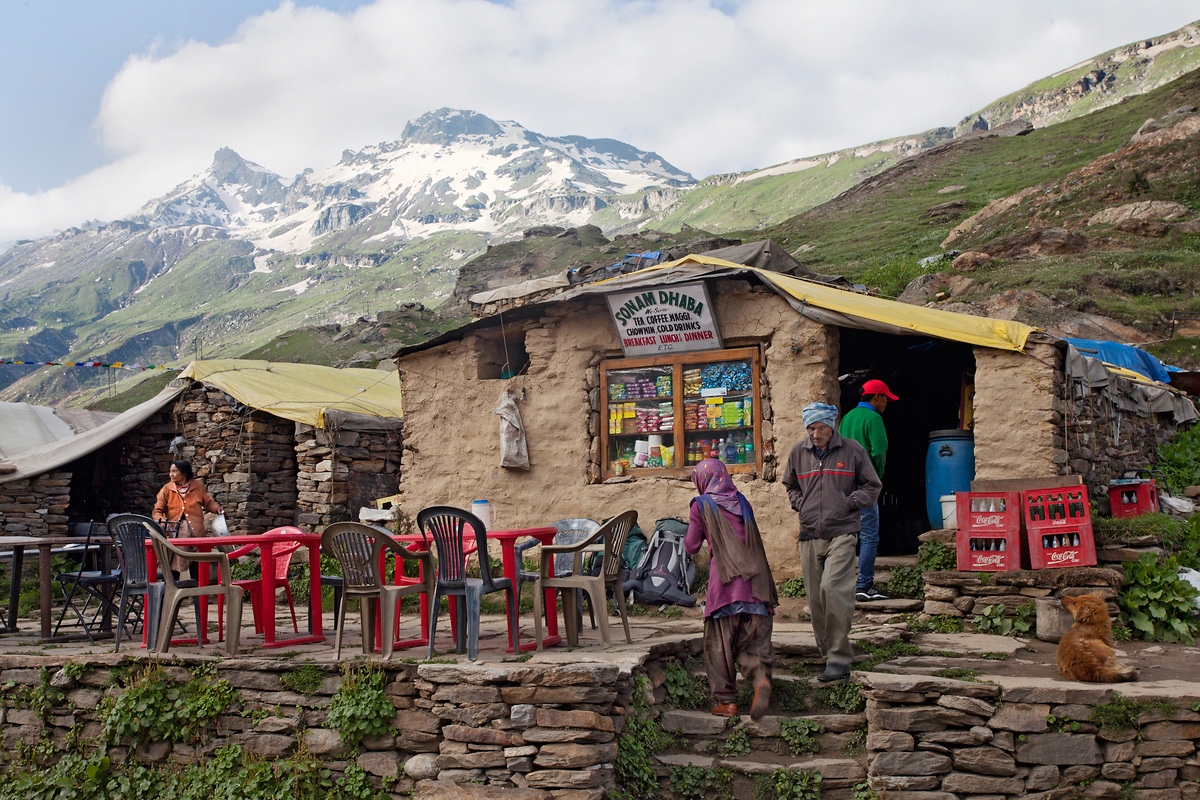
A chai-shop right under the snow-peaks.. now a common scene across the Indian Himalayas.
Also see: Our photography tours in the Himalayas

